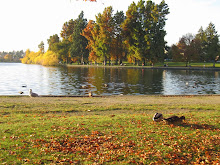
A few weeks ago, I was invited to attend a meeting of fisheries biologists to discuss fish stocks in the Okanogan and Columbia rivers. I had not been in a fisheries work setting since May 2009. It was very nice to hear words like “catostomids” and “anadromous” over words like “cancer” and “plural effusion”. The meeting was hosted by a bi-lateral group of fisheries agencies and first nations in both the US and Canada that have management responsibilities for fish along the Okanogan drainage. This group has evolved from efforts I initiated back in 1991 while working with my former employer Douglas County Public Utility District. In the 1990’s I was hoping to find a way to move a mitigation responsibility for a trans-boundary stock of sockeye salmon back into Canada. It would have been nice if the International Boundary was not an obstacle, but it was. Initially I was told any attempt to work with salmon in Canada from a US entity would require federal action by both governments. I was not interested in going back to either Washington DC or to Ottawa to make something happen. But with persistence and a vision of what could occur between the two countries on a local biological level, I continued to knock on the door. Eventually I was able to convince key individuals in both Canada and the US of the potential of working together to help protect sockeye in the Okanogan. After 10 years of work, in 2001, an agreement in the US was reached to fund certain research programs proposed by the Canadian fisheries parties. Some of those projects have turned out to be very successful in protecting both habitat and the salmon in critical stages of their life. Now after 20 years, the bi-lateral team has become one of the best functioning group of scientist I have encountered in my 35 years of work with fisheries resources. One of the more dramatic examples of their success has been the recovery from the brink of extinction of the Okanogan sockeye. This population in the 1990s was on a downward spiral as many of the populations of salmon in Washington and British Columbia. Counts at Wells Dam on the Columbia were the lowest on record, only 4,892 adults in 1995. Starting in 2002, this population has benefitted from the management of water releases in the Okanogan River at various critical life stages. From these efforts the population has had the highest returns over 60 years. Last year’s count at Wells was 291,764 adults. I mention all this because again, it as a nice to hear something that I was interested in rather than how my platelets count looked or the status of my liver from all the drugs I am on today.
Last week I received an okay from my cardiologist to move forward with a second bone marrow transplant. He said I was the strongest he has ever seen me. My transplanted heart is strong and has served me very well. I should be fine undergoing the full strength of the drug Melphalan that is used to destroy the bone marrow and hopefully all of the bad cells that are producing the amyloid protein. If we go forward with this, it will be in early May 2011.


God bless you Rick---cliff
ReplyDelete